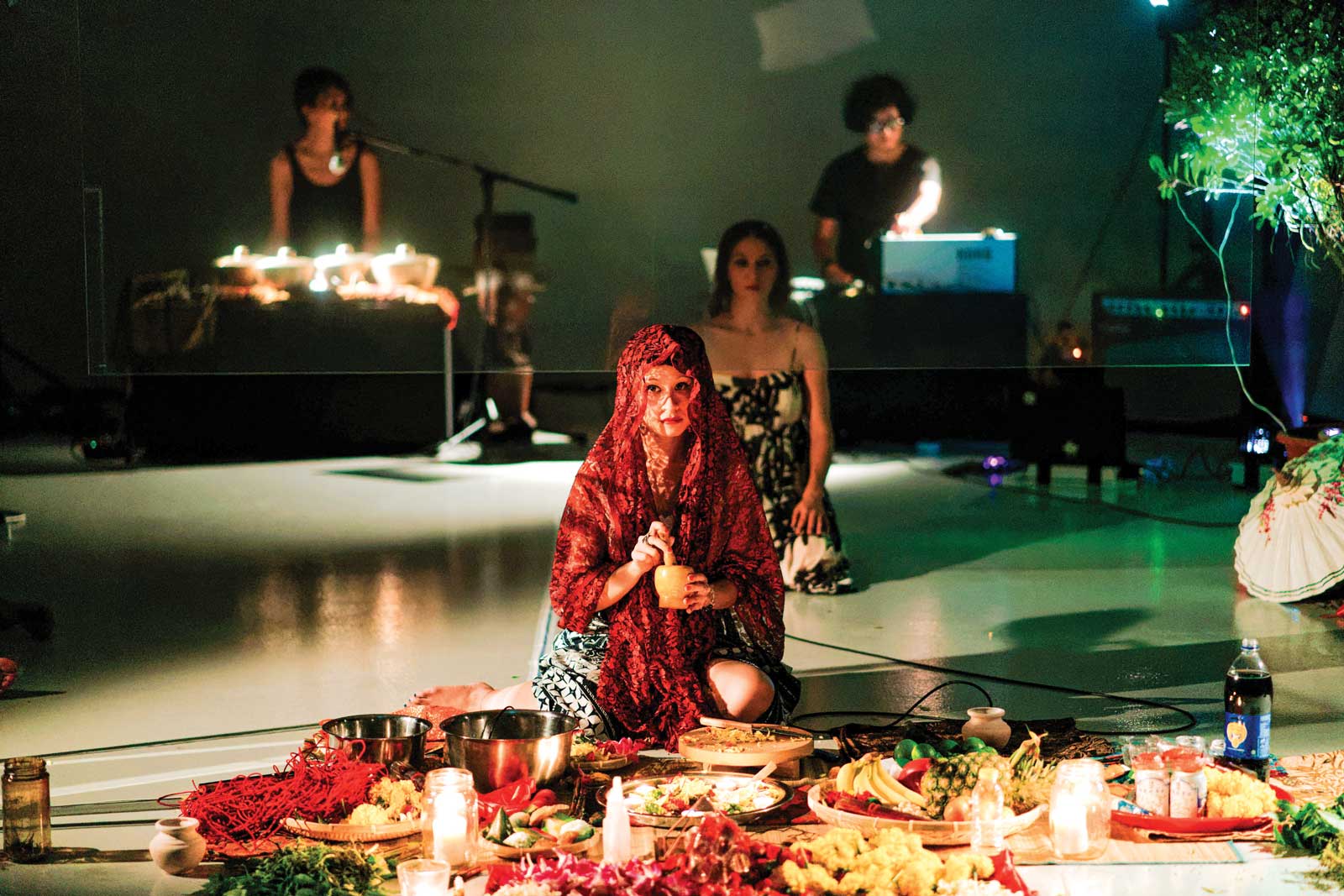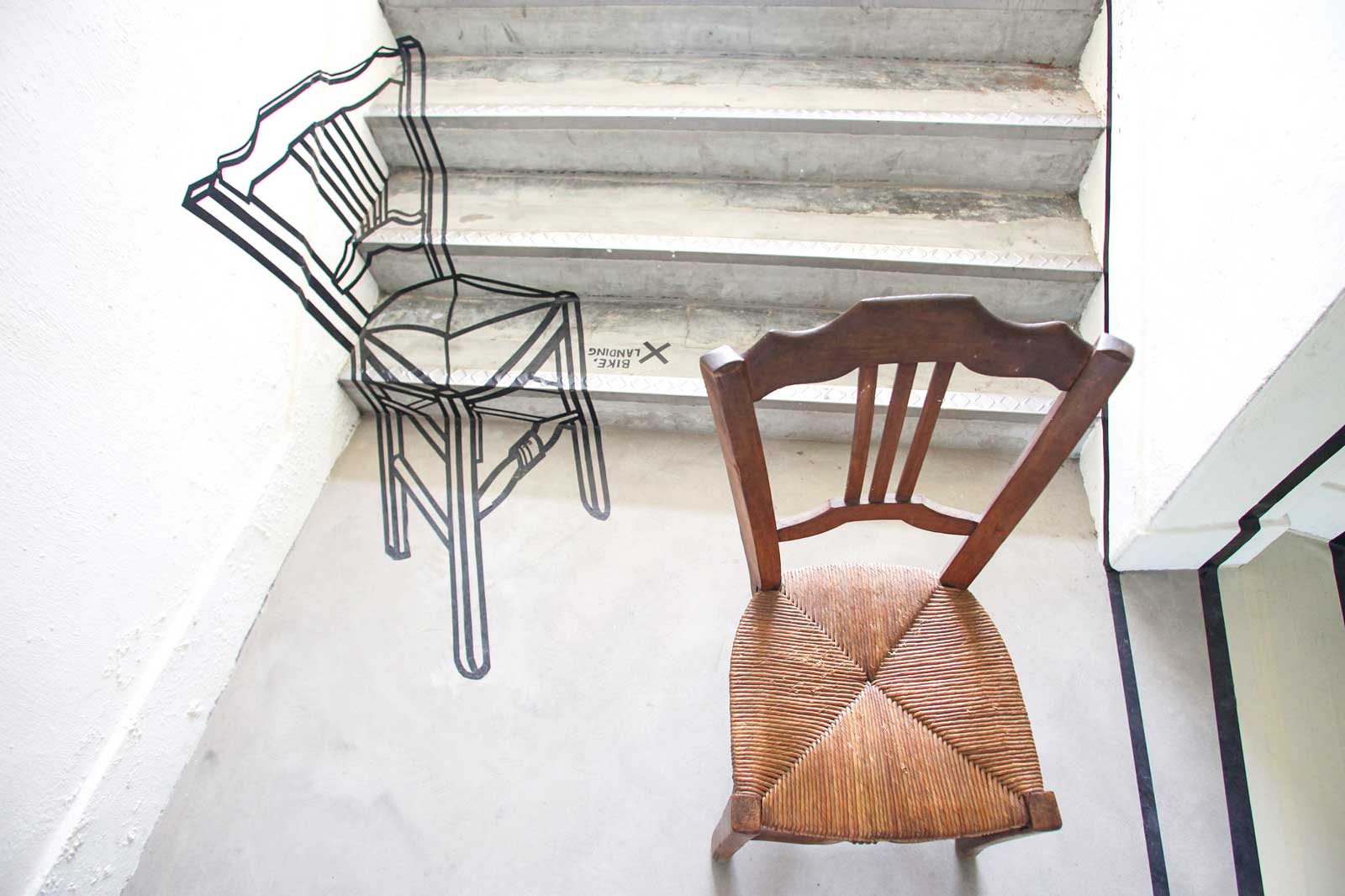A fire is smouldering in the belly of Sir Stamford Raffles. Open to the elements, his ribs lay bare beneath the sky like the bars of a grill. Crouched over his blazing entrails, Indonesian maids in Javanese court sarongs prepare traditional kueh kapit, a thinly folded wafer eaten across the ocean-faring nations of Southeast Asia.
This provocative artwork by Singaporean artist Jimmy Ong is the centrepiece for the latest art walk by OH! Open House, a Singapore-based group that leads art lovers and laymen alike through the streets of the city-state in search of art that has been uprooted from the crisp, white walls of galleries and museums.
“When we started it really was about: ‘How do you take art out of the [museum] so that people will find it more accessible to their lives?’” Open House’s artistic director and curator Alan Oei said. “Because museums, fundamentally, are still very much a middle-class, bourgeois pursuit, right? We believe that art has resonance for a much bigger population.”
Since 2009, Open House has led its followers on tours that take in locations ranging from the boardrooms of investment banks to the brothels of old Singapore. This month, though, Oei and his team will be travelling not just through physical space, but also to a time when the Lion City still crouched cowed beneath the boot of the British Empire.
Once the site of an immense nutmeg plantation owned by acting postmaster general William Cuppage, Emerald Hill now bears little resemblance to its 19th century forebear. Located just off the major shopping belt of Orchard Road, the neighbourhood has become the haunt of pricey bars and even pricier real estate.
This month, visitors will be presented with three tours exploring different facets of Emerald Hill’s history. In The Moral Hazards of Growing Nutmeg in a Faraway Land, their journey will take them through a recreated 19th-century warehouse packed with nutmeg and surreal sculptures shaped by artists Nabilah Nordin and Nick Modrzewski. In All the King’s Painters, they will see how history has been warped by its victors, as well as the struggle for artists to conform to a narrative that at times appears beyond question. And in Ways of Seeing, they will experience the clash between the colonial gaze and native traditions in shaping natural space, climaxing in a performance from academic and spirit medium Zarina calling upon the pre-colonial spirits of the land.

For a nation transformed from trading post to towering economic power in just over half a century, Oei said, Emerald Hill provides the perfect setting to draw back the curtain on Singapore’s own colonial past.
“A lot of post-colonial countries, one of the first things they do upon winning their independence is to tear down their sculptures and the legacy of their oppressors,” he said. “We, on the other hand, celebrate it as well.”
Built up into both trading port and military harbour town by the British to challenge the Dutch and Portuguese stranglehold on Southeast Asia’s spice trade, the Singapore founded by Sir Stamford Raffles seems a far cry from the city that has outstripped its regional competitors on just about every metric of prosperity. To modern eyes, the idea that the shining city-state could have grown from a seed as humble as nutmeg seems almost unthinkable.
“The Dutch and the Portuguese had been coming to Asia for a long time because of the spices – and nutmeg was one of the most valuable ones,” Oei said. “I think in Europe they had this idea also that nutmeg could even ward off the plague – so nutmeg really was worth its weight in gold. If you bought it here and sold it back in Europe, it was something like a 4,000% profit.”
As with all imperial projects, it was a profit that came with a devastating cost – though one that seems to have left little outward mark on the glittering metropolis of the 21st century. It is this buried tension surrounding the legacy of Singapore’s celebrated British founder Sir Stamford Raffles that fuels the latest work of Yogyakarta-based artist Jimmy Ong. His work, featured in the All the King’s Painters tour, picks apart the warring narratives that paint Raffles as both colonial oppressor and current-day icon of Singapore’s unrivalled prosperity. For many Singaporeans, he told Southeast Asia Globe, it was easy to see which history had triumphed.
“The perception of Raffles, at least from my memory, is that he is a branding of prestige for a school, a hotel, and then, later, property developments in the CBD of Singapore,” Ong said. “The funny thing is that people here in Indonesia actually say they wish Raffles had remained in Java, that it would have made Indonesia more successful like Singapore.”
Despite the weightiness of the subject matter, Oei said, it was these kinds of controversies – explored not just through fine art but the art of conversation – that breathed new life into the once-familiar streets of Singapore.
“Ours is kind of a blend of storytelling, and I think that explains some of our success in reaching out to people who normally aren’t so attuned to art – this allows them to follow stories and understand how the art works and give them different kinds of experiences,” he said. “That way I think we’ve been able to explore sensitive or even challenging issues.”

In a city-state as prosperous and densely populated as Singapore, that same ambition that drove the European powers to bend an entire people to their own economic ends remains rooted in the foundation of every high-rise. According to Oei, it is a realised ambition that has not come without cost.
“In Singapore we often don’t think about neighbourhoods as having any sort of value, or any specific identity just because of the nature of property speculation and how we’re always trying to upgrade to the next thing,” he said. “But each of [Singapore’s] neighbourhoods has their own secret stories, and that’s what we wanted to focus on as well.”
Like all stories worth hearing, the narratives of these neighbourhoods are inevitably shaped by money, power and the imaginations of the men who wield them. Almost two years ago, when Open House led groups on an artwalk through the rapidly developing district of Potong Pasir – famous for its distinction as Singapore’s longest-held opposition ward – they were showing people two very different Singapores.
Neglected for years by an authoritarian government loathe to lavish funds on a neighbourhood that refused to follow its party line, Potong Pasir had long been a vision of old-world Singapore in all its ruinous charm. Now, with even graveyards buckling between the weight of a sudden influx of cranes and scaffolding brought on by the local triumph of the ruling People’s Action Party in 2011, the new neighbourhood bears little trace of its political past.
“I think that strange message of what this construction means in relation to politics is something that hits home very strongly – because we are all so used to construction and development that we don’t think about the politics of it,” Oei said. “And so Potong Pasir was one that was quite poignant, because you could walk around and see things changing before your eyes – and you knew that it was all politically motivated.”


